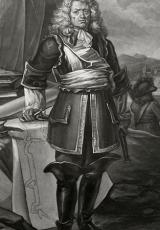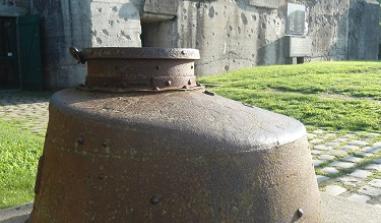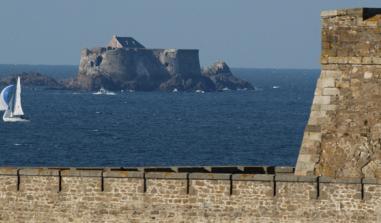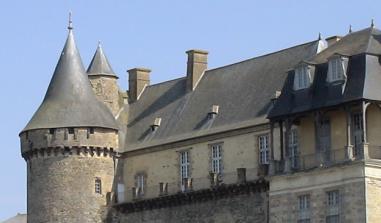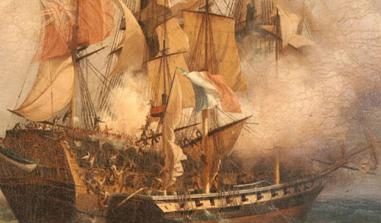The Fort de la Conchée

Le fort de la Conchée. Source : www.hubert35.net
The Fort de la Conchée is anchored to the Rocher de Quincé. Forming part of the protection system for St Malo, it was a fortification designed to enable enemy ships to be taken from behind and thus protect the city.
At the end of the 17th Century, France was in conflict with the League of Augsburg. Along with his Dutch allies, the Prince of Orange, who had become William III, King of England, imposed a maritime blockade on the kingdom of Louis XIV. Corsaires departing from the port of Saint-Malo broke through the Anglo-Dutch barricade in a spectacular storming action. Faced with the enemy threat, the Sun King decided to equip the islands off the Saint Malo coast and in 1689 gave Vauban the task of establishing a wall of artillery around this strategic position at the entrance to the Channel.
The Conchées islands extend two nautical miles to the north west of Saint-Malo. Beaten by winds and currents, the Fort de la Conchée is anchored to the Rocher de Quincé. Part of the protection system for St Malo, and the structure furthest from the port, this small fort was designed to enable enemy ships attempting to bombard St Malo to be taken from behind, by securing an access route to the harbour out of reach of Cézembre's canons: " the Passe aux Normands".
Construction of the building began in 1692 from plans that Vauban had entrusted to Siméon de Garangeau, who was appointed director of fortifications in Saint-Malo. On the 27th November 1693, the English seized the fort as it was being built, but failed in their attempt to destroy the city of St Malo using the famous infernal machine, a vessel loaded with explosives which ran aground on the reefs before reaching the city's ramparts. Considered to be finished in 1695, the Fort de la Conchée resisted another attack that same year from the English fleet, commanded by Admiral Berkeley. With a surface area of 1,600 m², the fortification has the appearance of a stone vessel with rounded edges, concealing curved internal vaults. The stonework of the thick ramparts has been reinforced not only to strengthen the fortification against enemy fire, but also in order to protect the small rock supporting the building from the onslaught of waves. On the lower level, a monumental entranceway, with the King's arms carved into the rock, provides direct access to one of the fort's lower chambers. On the upper level, artillery terraces housed gunwale canons (above the parapet, due to the elevated position of the structure's ground floor), which allowed the gunners to reach the hulls of the enemy ships. At the end of the 18th century an oven was built inside the structure to heat the Meusnier cannonballs. Protected from enemy projectiles by a stone base and equipped with a semi-circular vault enabling the cannonballs to be heated by reverberation, this oven allowed the constant heating of several dozen cannonballs in just one hour. It also acted as a deterrent at a time before the invention of vessels with armoured hulls. In fact, just the smoke from such an oven was often enough to make any attacker head off back to sea.
During the Second World War, the Fort de la Conchée was taken over by the occupying troops and used as a training target by the heavy German batteries. It suffered a lot of damage, most notably in 1943, when fire from one of these batteries seriously damaged the southern gable of the structure and destroyed the officers' living quarters on the terrace. In 1944, Saint-Malo was occupied by the German garrison of Colonel von Aulok and, from the 6th August onwards, was heavily bombarded by the allied army Most of the city was destroyed, the ramparts seriously damaged and all the fortification's living accommodation reduced to nothing. When allied troops took back possession of the Fort de la Conchée, the former war machine was in ruins and no longer had any defensive purpose.
Saint-Malo Tourist Information Office Esplanade St-Vincent 35400 Saint-Malo tel. + 33 (0) 8 25 16 02 00 fax. + 33 (0) 2.99.56.67.00 e-mail: info@saint-malo-tourisme.com
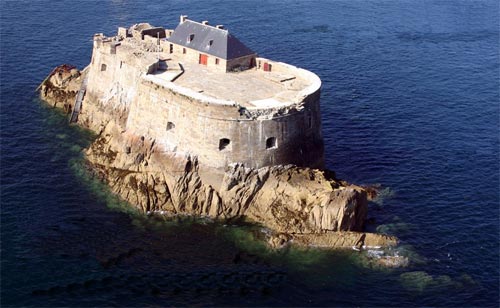
The fort de la Conchée. Source: www.fortdelaconchee.fr
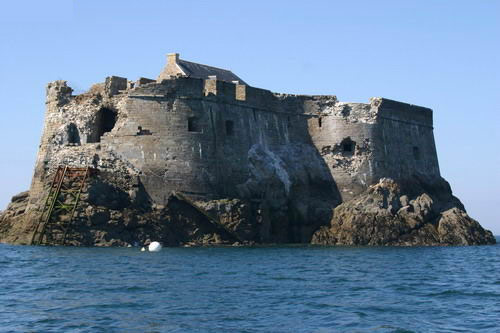
The Fort de la Conchée. Source: Michel Badet
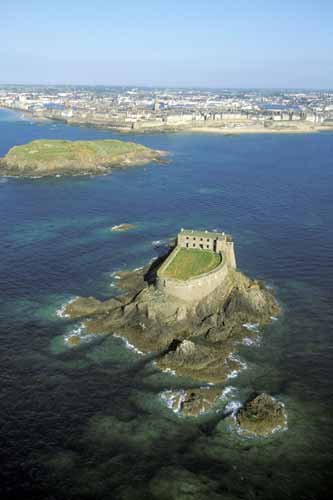
The Fort du Petit Bé. Photo ECPAD
Practical information
Esplanade St-Vincent 35400
Saint-Malo
08 25 16 02 00



